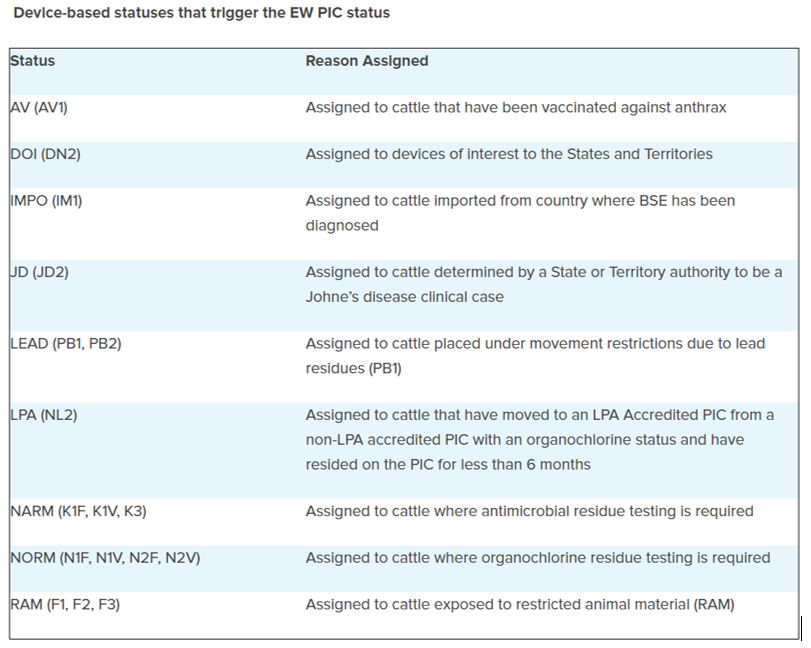Early warning statuses - from lead to cotton trash
From Monday, 13 January 2020 early warning (EW) statuses on the National Livestock Identification System (NLIS) database became visible to all account holders, but what does all the jargon and acronyms actually mean?
What is an early warning status?
An EW status is a status within the NLIS database which is automatically assigned to a property carrying a high risk animal or animals.
What has changed?
The NLIS early warning system has existed for many years and was only visible to select account holders such as vet, or processing facilities. The EW system was designed to manage food safety and biosecurity risk throughout the food chain. It is designed to flag PICs belonging to a property that have detained animals that pose a risk to the food chain if they were to be slaughtered. This provides a warning to potential buyers to check that a consignment does not contain any of these detained animals, making sure that stock entering the food chain are safe for human consumption.
There are EW statuses for a range of things, as shown in the table below:
Table 1: Early Warning Statuses
The most common one we deal with locally is lead residues (PB statuses). These usually occur after animals have access to old batteries. As a result of this all food producing animals which have been exposed to the lead source are tested to identify if any have lead levels above what is considered safe form human consumption. Any animal with levels above the threshold are assigned a PB1 status and subsequently the PIC receives and EW status to ensure those animals don’t end up in the food chain, until their lead levels are below the acceptable threshold. During this time all other animals on the property which were either not exposed or tested below the threshold are fit for human consumption, however will have a visible early warning status at saleyards and abattoirs so it can be checked that the affected animal/s is not included in the consignment.
National Vendor Declarations (NVDs)
Current LPA National Vendor declarations require properties with a EW status to respond ‘YES’ to question 5 on the NVD for 6 months after the last animal with a device status is removed.
Through the new system it is advised that it is the vendors responsibility to disclose any risk associated with the consignment i.e. there are cattle affected by lead on the property but not in the consignment’. It is the buyer’s responsibility assess the risk of a consignment prior to purchase and investigate further when required.
With these changes it’s a great time to think about residues, if you are using veterinary prescribed medications, or worm or fly products ensure with-holding periods are adhered to and if you are feeding cotton trash you are well aware of the clean feeding requirements or have lead batteries lying PICK THEM UP. Producers affected by an EW status should contact their agent prior to selling stock so that buyers can be adequately advised of the situation, the status and status of stock in the consignment.
Information sourced from:
https://www.integritysystems.com.au/earlywarning

